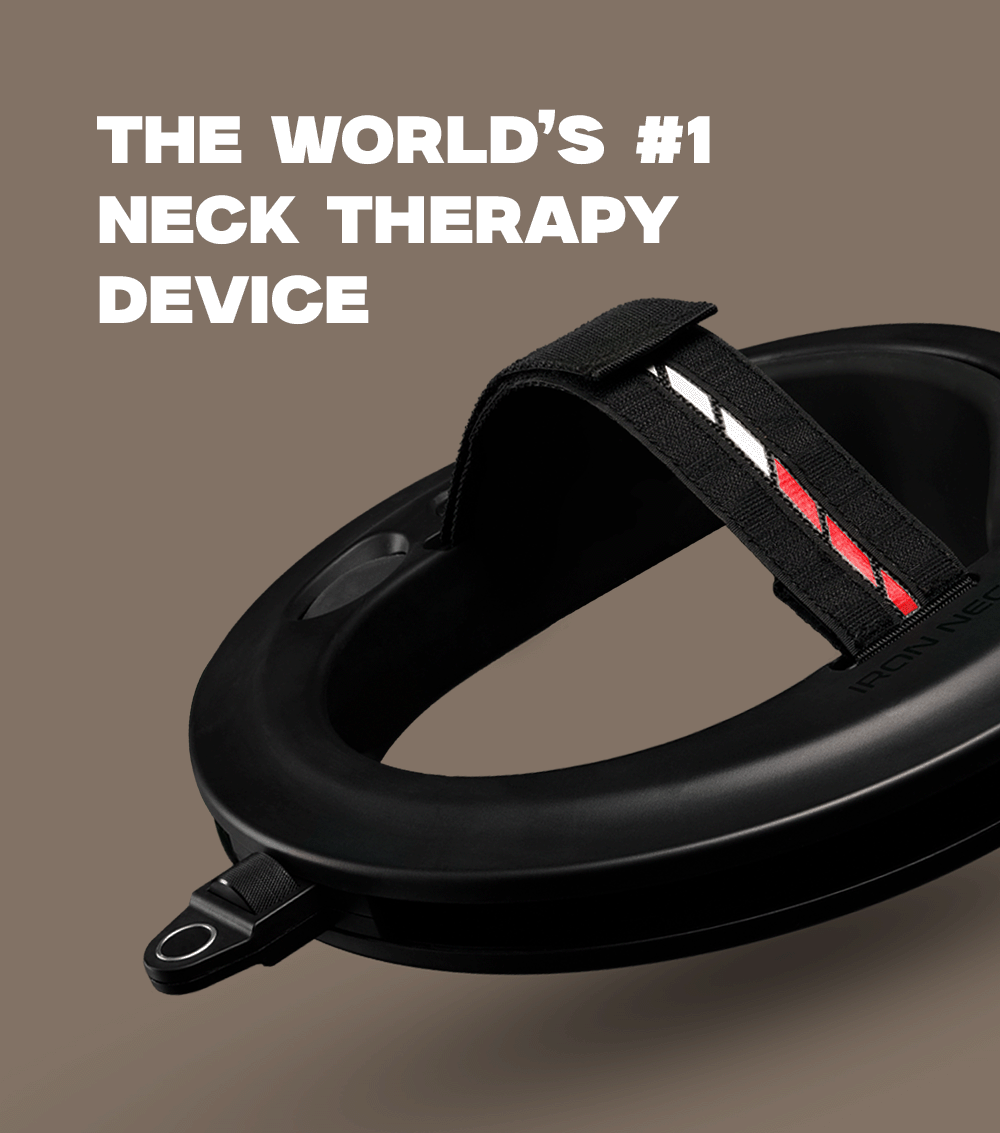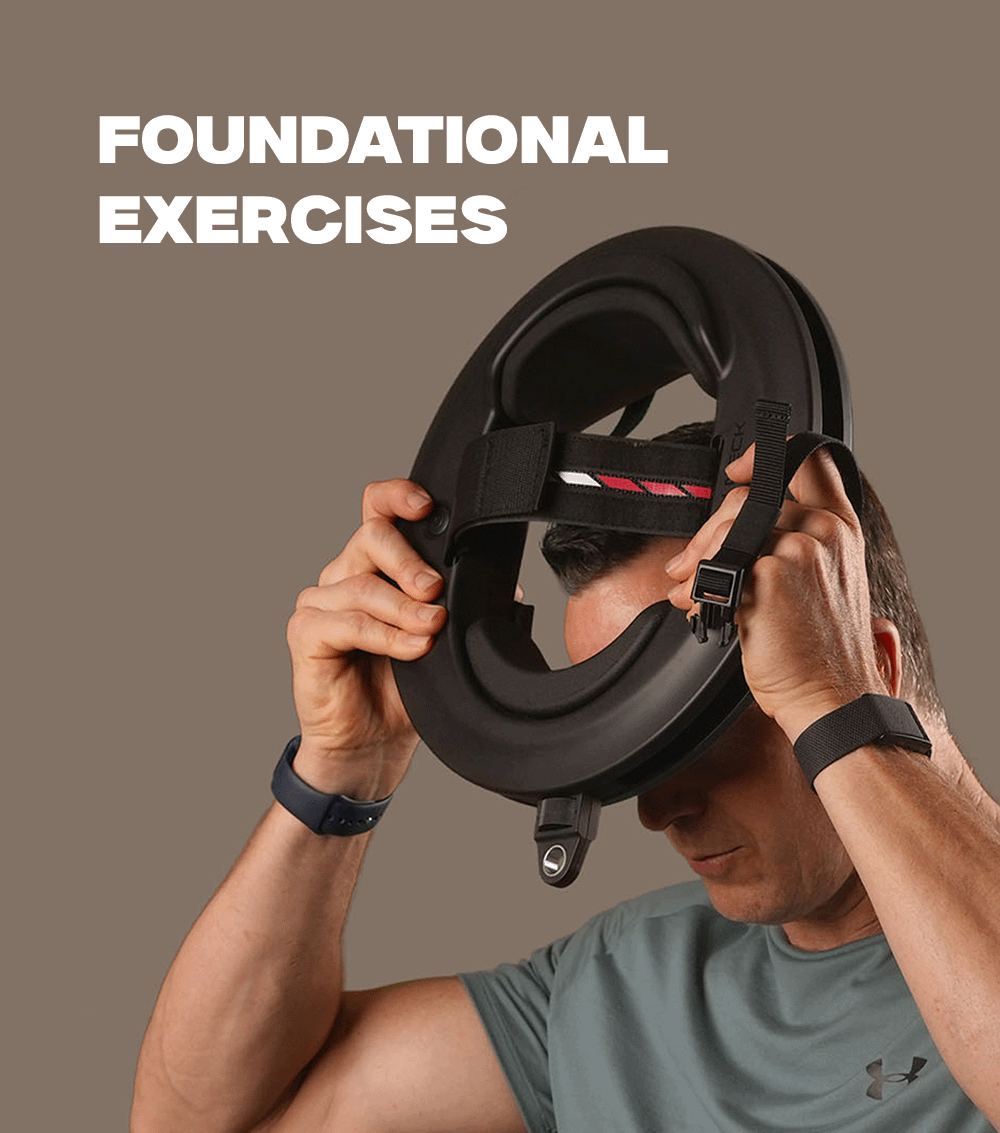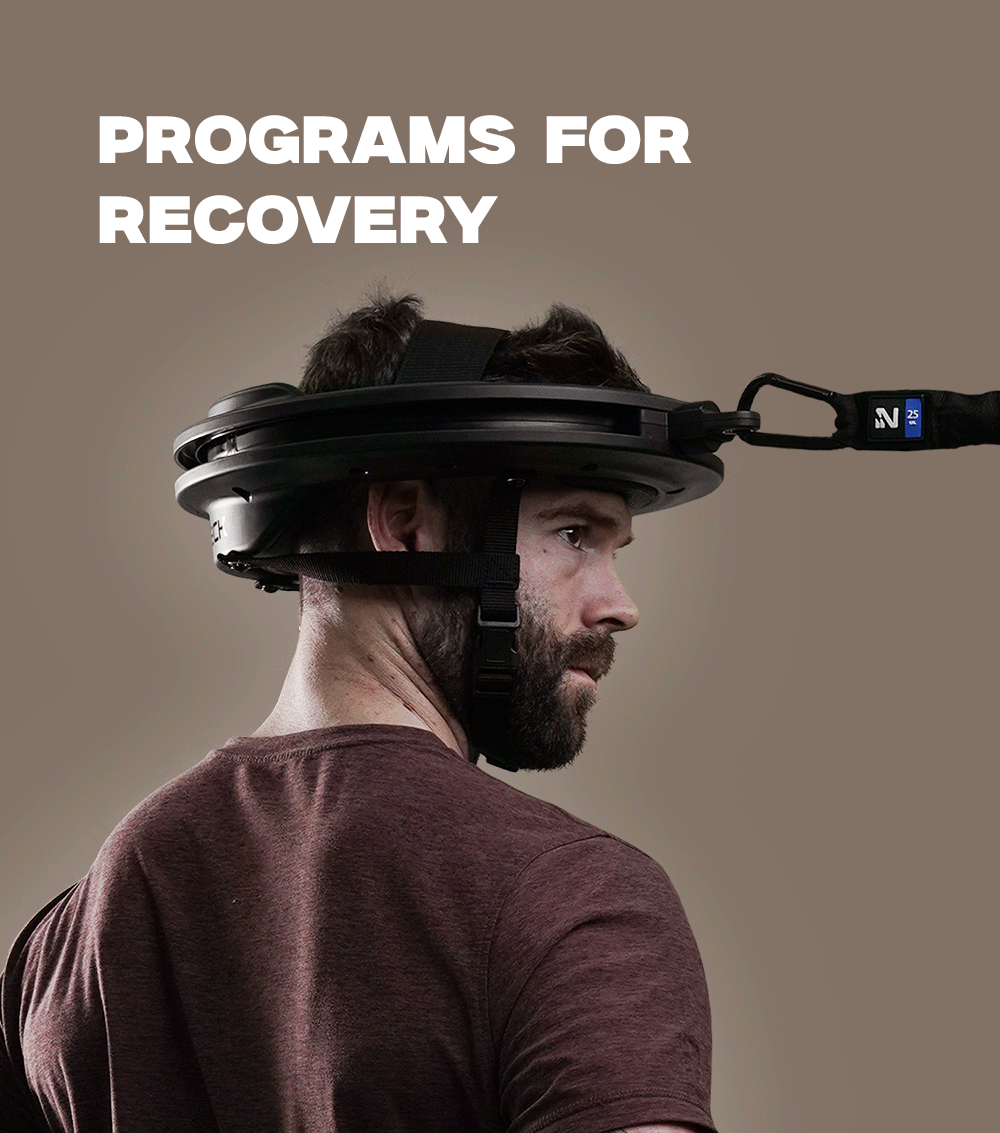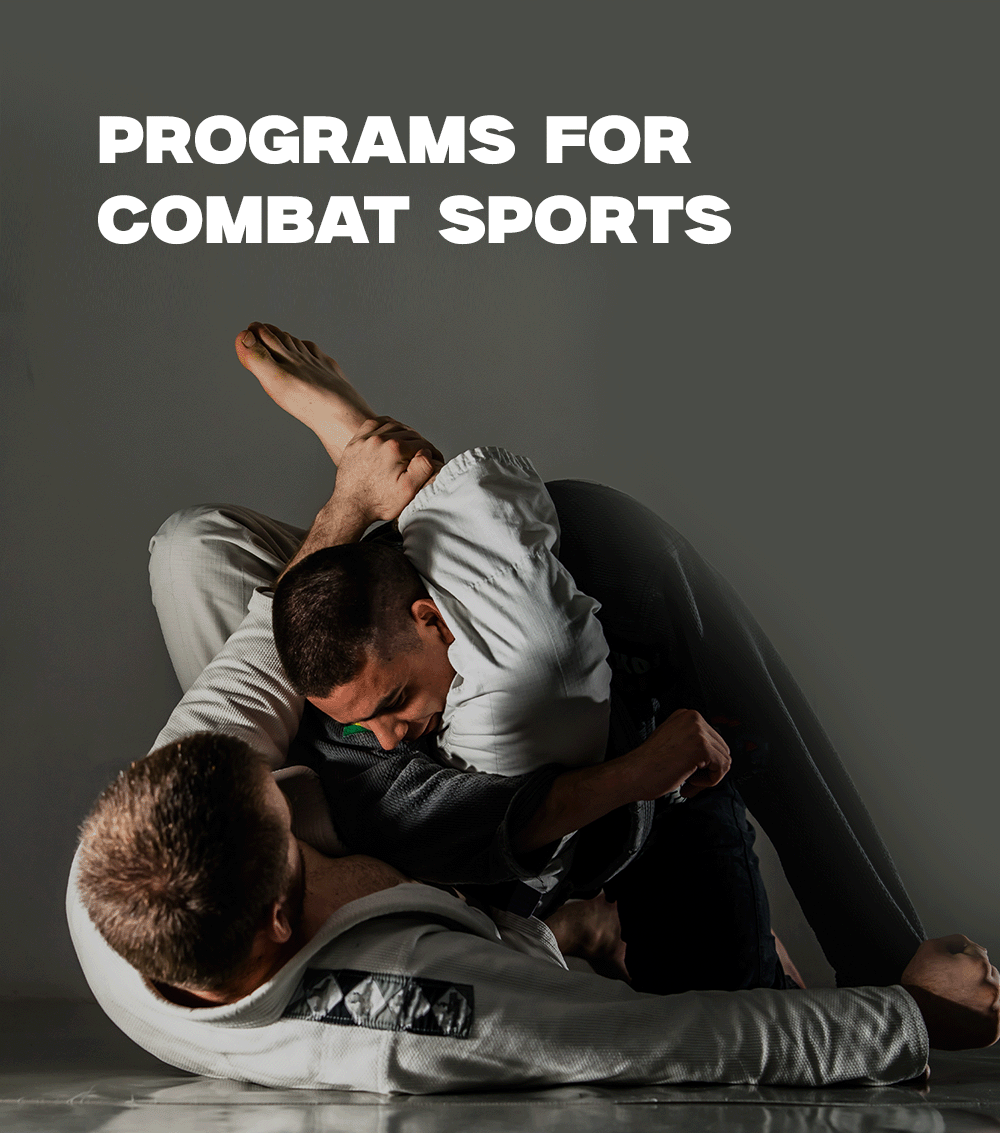Do you experience frequent neck pain and stiffness? Are you unhappy with the way your posture looks? If so, you're in the right place. Today, we're going to explain how to improve your neck posture quickly and easily.
This short guide will cover everything you need to know about forward head posture. We'll explain what exactly good posture looks like, and why it's so important in preventing neck pain and tension. Then, we'll teach you how to fix forward head posture once and for all.
By the end of this article, you'll be well on your way to restoring proper posture and eliminating pain, tension, and the unsightly look of "nerd neck", as it is so eloquently referred to by some. Let's get started.
What Exactly Is Good Neck Posture?
Before we can address how to attain good neck posture, we need to explain what it looks like. It's easier to visualize than describe, but it's as simple as this: good posture is exhibited by a neutral spine. From the lumbar spine (bottom of your spine) to your cervical spine (top of your spine) - you should be able to draw a relatively straight line.
You can have bad posture in a number of different areas. Poor lumbar posture means that you bend over excessively at your lower back. This is common in manual labor fields. Or, maybe you have issues with your thoracic spine posture - meaning you slouch forward in your chair, letting your shoulder blades round forward.
But what about bad neck posture in particular? This is characterized by extending your head forward. Thus, the name "forward head posture". You'll also hear this type of posture referred to by other names, such as nerd neck, text neck, or tech neck. Why? Because forward head posture is most common in those who work desk jobs. You may also have issues with your neck angle. If you look up too often, or look down too often, you’ll have to address that issue too.
Spending 8 hours a day in front of a screen is not how humans were designed to operate. It's very common for office workers to allow their heads to drift toward the screen they're looking at. Over time, this pattern becomes ingrained in your cervical spine and it gets stuck there. Forward head posture is also common in gamers or those who spend too much time on their cell phones - anyone who spends too long looking toward a screen.
Why Does Good Neck & Head Posture Matter?
Forward head posture is problematic for a few obvious reasons. Not only does nerd neck look a bit ugly and unnatural. But, it also contributes to neck pain and immobility. It can lead to more serious complications down the road if you don’t correct it.
The longer you allow your head posture to remain in a forward position, the worse off you'll be. It'll become more and more ingrained, and tougher to rectify. You'll put your neck joints, muscles, and tendons under severe stress as they're stretched to their limit. This overactivity of certain muscles will lead to under-activity of others, leading to neck muscle imbalances.
In summary, good neck posture eliminates pain and tightness while preventing the risk of future injury. And, it just plain looks better. There is nothing less attractive than a slouching, overextended neck posture. So, what can be done?
How Can I Improve My Neck Posture?
Fortunately, improving neck posture is simple. You can regain proper posture on your own without any professional medical help. There are just three steps you need to take:
It's important that you take action on all three of these aspects. They work synergistically to enhance your posture. Let's start by talking about lifestyle adjustments.
Correct Forward Head Posture By Making Lifestyle Adjustments
The first step to improve forward head posture is to take note of your posture throughout the day. This can be done by setting a timer every 30 minutes or so. When the timer goes off, take note of your posture. Is your neck extending forward, downward, or upwards? If so, pull it back into a neutral position. After a while, you'll notice that your posture is dialed in and you won't have to tweak it when the timer goes off. Just be patient, as reversing poor posture does take time.
You can also look at your day-to-day life and identify the root causes of forward head posture. If you work a desk job, consider a more ergonomic chair with a headrest. Keeping your head against the headrest will prevent you from extending forward. You can also look at the angle and height of your computer monitor. If it isn't at eye level, you'll have to crane your head up or down. Consider raising or lowering your monitor accordingly.
If you're a student carrying around a heavy backpack, consider lightening your load. Your cervical spine will naturally extend forward to help you balance and support the weight of textbooks, a laptop or tablet, and all the other stuff you carry around as you walk to and from class. If you find that you spend 4-6 hours a day looking at your phone, a laptop, or TV screen - try and get this number down.
It’s also possible that your forward head posture is caused by a poor sleeping arrangement. If you rest your head on too many pillows, you'll find that you wake up with neck soreness and tension. And over time, this will contribute to poor posture. A cervical pillow is one of the best ways to ensure your sleeping position isn't affecting your posture while you're awake.
Once you've taken steps to fix your posture and work on maintaining it day in and day out, you'll be well on your way to better posture. But, you need to eliminate tightness that causes your head to drift forward, too. That's where stretching comes in.
Stretches To Fix Forward Head Posture
Oftentimes, forward head posture is caused by tight muscles. But, not in the way you might think. The tight muscles aren't located in your neck - usually, it's tight shoulders and chest muscles. Stretching these and loosening them up will help a lot.
You can try the door stretch to loosen up your pec muscles. Find a doorway, and put your arms in a 90-degree angle with your hands touching each side of the door frame. Then, start leaning forward until you feel a stretch in your shoulders and chest muscles. If you feel shoulder pain, it could indicate an underlying injury that needs to be addressed. You should feel a stretch - not pain.
While nerd neck is usually not caused by tight neck muscles, that doesn't mean you shouldn't make neck stretches a part of your regimen. Here are a few simple ones you can try:
- Neck extension
- Neck flexion
- Neck rotation
- Neck side flexion
Exercises To Fix Forward Head Posture
Along with stretches to fix the tight muscles pulling your head forward, you can take action to strengthen your neck. Neck strengthening exercises will help you maintain the ideal posture. Poor posture is often caused by weakness. These exercises will address this issue. So, how do you get a stronger neck? Here are some of our favorite exercises:
- Chin tucks: One of the most simple exercises you can perform is chin tucks. They're exactly what they sound like. You're going to start with your head in a neutral position. Then, tuck your chin down until it touches your chest. You'll feel a stretch in the back of your neck, while muscles on the anterior (front) of your neck engage.
- Look left, look right: This exercise engages the lateral muscles of your neck (on the sides). Again, the mechanism is in the name. Start with your head straight forward and neutral. Then, look to the left until you feel a stretch. Don't go any further than comfortable - but the goal is to get as much range of motion as possible. Hold the position for a few seconds before returning to the starting position. Then, do the same thing in the other direction.
- Cervical glides: This is a more sophisticated exercise to help you improve your neck posture, and it will require the help of a neck exercise machine. You'll want to watch a video resource on this to make sure you get it right, but the steps are simple. Start in a neutral neck position. Then, draw a square with your nose. Move your head to the right, then up then all the way to the left, then down, and back to the starting position.
We wrote an entire guide on neck posture exercises. Take a look if you'd like to gain a better understanding of how to perform the exercises listed above.
Final Thoughts On Improving Neck Posture & Eliminating Forward Head Syndrome
Now that you know how to improve neck posture, you can get started today. It's as simple as making some alterations to your lifestyle, stretching, and strengthening. Above all else, the most important thing to take away from this guide is to strengthen your neck.






